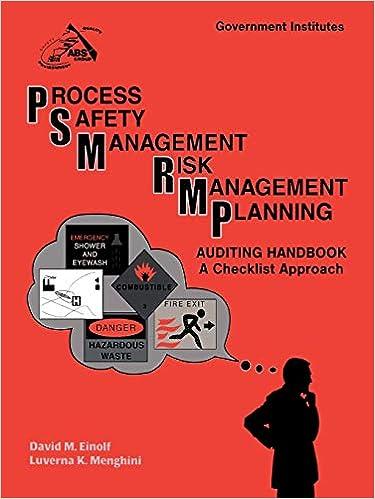Answered step by step
Verified Expert Solution
Question
1 Approved Answer
Step 2: Compute the Equivalent Units of Production begin{tabular}{|c|c|c|} hline & Materials & Conversion hline multicolumn{3}{|l|}{ Beginning Inventory } hline multicolumn{3}{|l|}{% Complete }


 Step 2: Compute the Equivalent Units of Production \begin{tabular}{|c|c|c|} \hline & Materials & Conversion \\ \hline \multicolumn{3}{|l|}{ Beginning Inventory } \\ \hline \multicolumn{3}{|l|}{% Complete } \\ \hline \multicolumn{3}{|l|}{% to Complete } \\ \hline \multicolumn{3}{|l|}{ Equivalent Units } \\ \hline \multicolumn{3}{|l|}{ Units Completed and Transferred } \\ \hline \multicolumn{3}{|l|}{ Beginning Inventory } \\ \hline \multicolumn{3}{|l|}{ Units Started and Completed } \\ \hline% Complete & 100% & 100% \\ \hline \multicolumn{3}{|l|}{ Equivalent Units } \\ \hline \multicolumn{3}{|l|}{ Ending Inventory } \\ \hline \multicolumn{3}{|l|}{% Complete } \\ \hline \multicolumn{3}{|l|}{ Equivalent Units } \\ \hline Total Equivalent Units of Production & & \\ \hline \end{tabular} Carbata Company manufactures low-cost, basic tool kits in bulk. Below is the latest information for last month's production. \begin{tabular}{|c|c|c|c|} \hline & Units & Materials Cost & Conversion Cost \\ \hline Inventory on September 1 & 950 & 5,550 & 2,354 \\ \hline% Complete & & 60% & 30% \\ \hline Units Started & 3,150 & & \\ \hline Costs Added in September & & 28,940 & 8,156 \\ \hline Inventory on September 30 & 1,200 & & \\ \hline% Complete & & 80% & 60% \\ \hline \end{tabular} Required: Use the information above to complete a Process Costing Production Report under the FIFO Assumption. Step 1: Account for all Units \begin{tabular}{l|l|} \hline & \\ \hline Beginning Inventory \\ Units Started \\ Units to Account for \\ Ending Inventory \\ Units Completed and Transferred \\ Units to Account for \\ \hline \end{tabular} Step 3: Compute the Cost per Equivalent Unit of Production \begin{tabular}{|c|c|c|c|} \hline & Materials & Conversion & \\ \hline \multicolumn{4}{|l|}{ Beginning Inventory Cost } \\ \hline \multicolumn{4}{|l|}{ Costs Added } \\ \hline \multicolumn{4}{|l|}{ Total Cost to Account for } \\ \hline \multicolumn{4}{|l|}{ Total Equivalent Units of Production } \\ \hline \multicolumn{4}{|l|}{ Cost Per Equivalent Unit } \\ \hline \multicolumn{4}{|l|}{ Total Cost per Equivalent Unit } \\ \hline \multicolumn{4}{|l|}{ Step 4: Reconciling Costs } \\ \hline & Materials & Conversion & Total \\ \hline \multicolumn{4}{|l|}{ Beginning Inventory Cost } \\ \hline \multicolumn{4}{|l|}{ Costs Added } \\ \hline \multicolumn{4}{|l|}{ Total Cost to Account for } \\ \hline \multicolumn{4}{|l|}{ Cost of Beginning Inventory from Last Month } \\ \hline \multicolumn{4}{|l|}{ Cost of Beginning Inventory Completed in September } \\ \hline \multicolumn{4}{|l|}{ Cost of Units Started and Completed } \\ \hline \multicolumn{4}{|l|}{ Cost of Units in Ending Inventory } \\ \hline Total Cost to Account for & & & \\ \hline \end{tabular}
Step 2: Compute the Equivalent Units of Production \begin{tabular}{|c|c|c|} \hline & Materials & Conversion \\ \hline \multicolumn{3}{|l|}{ Beginning Inventory } \\ \hline \multicolumn{3}{|l|}{% Complete } \\ \hline \multicolumn{3}{|l|}{% to Complete } \\ \hline \multicolumn{3}{|l|}{ Equivalent Units } \\ \hline \multicolumn{3}{|l|}{ Units Completed and Transferred } \\ \hline \multicolumn{3}{|l|}{ Beginning Inventory } \\ \hline \multicolumn{3}{|l|}{ Units Started and Completed } \\ \hline% Complete & 100% & 100% \\ \hline \multicolumn{3}{|l|}{ Equivalent Units } \\ \hline \multicolumn{3}{|l|}{ Ending Inventory } \\ \hline \multicolumn{3}{|l|}{% Complete } \\ \hline \multicolumn{3}{|l|}{ Equivalent Units } \\ \hline Total Equivalent Units of Production & & \\ \hline \end{tabular} Carbata Company manufactures low-cost, basic tool kits in bulk. Below is the latest information for last month's production. \begin{tabular}{|c|c|c|c|} \hline & Units & Materials Cost & Conversion Cost \\ \hline Inventory on September 1 & 950 & 5,550 & 2,354 \\ \hline% Complete & & 60% & 30% \\ \hline Units Started & 3,150 & & \\ \hline Costs Added in September & & 28,940 & 8,156 \\ \hline Inventory on September 30 & 1,200 & & \\ \hline% Complete & & 80% & 60% \\ \hline \end{tabular} Required: Use the information above to complete a Process Costing Production Report under the FIFO Assumption. Step 1: Account for all Units \begin{tabular}{l|l|} \hline & \\ \hline Beginning Inventory \\ Units Started \\ Units to Account for \\ Ending Inventory \\ Units Completed and Transferred \\ Units to Account for \\ \hline \end{tabular} Step 3: Compute the Cost per Equivalent Unit of Production \begin{tabular}{|c|c|c|c|} \hline & Materials & Conversion & \\ \hline \multicolumn{4}{|l|}{ Beginning Inventory Cost } \\ \hline \multicolumn{4}{|l|}{ Costs Added } \\ \hline \multicolumn{4}{|l|}{ Total Cost to Account for } \\ \hline \multicolumn{4}{|l|}{ Total Equivalent Units of Production } \\ \hline \multicolumn{4}{|l|}{ Cost Per Equivalent Unit } \\ \hline \multicolumn{4}{|l|}{ Total Cost per Equivalent Unit } \\ \hline \multicolumn{4}{|l|}{ Step 4: Reconciling Costs } \\ \hline & Materials & Conversion & Total \\ \hline \multicolumn{4}{|l|}{ Beginning Inventory Cost } \\ \hline \multicolumn{4}{|l|}{ Costs Added } \\ \hline \multicolumn{4}{|l|}{ Total Cost to Account for } \\ \hline \multicolumn{4}{|l|}{ Cost of Beginning Inventory from Last Month } \\ \hline \multicolumn{4}{|l|}{ Cost of Beginning Inventory Completed in September } \\ \hline \multicolumn{4}{|l|}{ Cost of Units Started and Completed } \\ \hline \multicolumn{4}{|l|}{ Cost of Units in Ending Inventory } \\ \hline Total Cost to Account for & & & \\ \hline \end{tabular} Step by Step Solution
There are 3 Steps involved in it
Step: 1

Get Instant Access to Expert-Tailored Solutions
See step-by-step solutions with expert insights and AI powered tools for academic success
Step: 2

Step: 3

Ace Your Homework with AI
Get the answers you need in no time with our AI-driven, step-by-step assistance
Get Started


